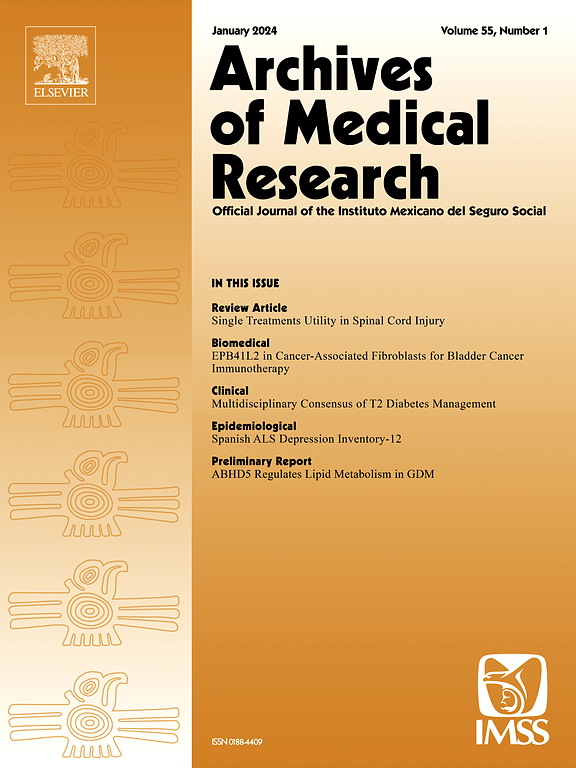Valdecoxib Ameliorates Apoptosis and Ferroptosis in Tenocytes via the SIRT6/NRF2-Mediated Suppression of Oxidative Stress
IF 3.4
3区 医学
Q1 MEDICINE, RESEARCH & EXPERIMENTAL
引用次数: 0
Abstract
Background and Aims
Valdecoxib (VAL), a nonsteroidal anti-inflammatory drug (NSAID), is widely used in the treatment of osteoarthritis and rheumatoid arthritis. In addition to its anti-inflammatory properties, VAL has been shown to improve skeletal muscle insulin resistance and attenuate hepatic steatosis in obese individuals. However, its potential effects on oxidative stress injury in tenocytes remain unclear. This study aims to explore novel functions of VAL by investigating its impact on cell death in oxidative stress-exposed tenocytes and elucidating the underlying molecular mechanisms, with a focus on its therapeutic potential for the treatment of tendinopathy.
Methods
Apoptosis was assessed using cell viability assays, caspase-3 activity measurements, and TUNEL staining. Hydrogen peroxide (H₂O₂) and malondialdehyde (MDA) levels in tenocytes were quantified using appropriate assay kits, while reactive oxygen species (ROS) were detected by DCFDA staining. Tenocyte migration was evaluated using a scratch assay, and protein expression levels were analyzed by Western blotting.
Results and Conclusion
In the present study, we found that VAL treatment suppressed apoptosis and ferroptosis and normalized the expression of extracellular matrix (ECM) degradation markers, and enhanced cell migration in H2O2-treated tenocytes. VAL treatment increased the expression of SIRT6 and NRF2 and the activities of antioxidant enzymes. SIRT6-targeted siRNA abrogated the effects of VAL on tenocytes treated with H2O2. It also reduced VAL-induced NRF2 expression and antioxidant enzyme activities. These results suggest that VAL ameliorates oxidative stress induced tenocyte dysfunction through SIRT6/NRF2-mediated signaling. Therefore, this study highlights a potential therapeutic strategy for the treatment of overuse-induced tendinopathy.

Valdecoxib通过SIRT6/ nrf2介导的氧化应激抑制改善细胞凋亡和铁凋亡
背景和目的valdecoxib (VAL)是一种非甾体抗炎药(NSAID),广泛用于骨关节炎和类风湿关节炎的治疗。除了其抗炎特性外,VAL已被证明可以改善肥胖个体的骨骼肌胰岛素抵抗和减轻肝脂肪变性。然而,其对细胞氧化应激损伤的潜在影响尚不清楚。本研究旨在通过研究VAL对氧化应激暴露的肌腱细胞死亡的影响并阐明其潜在的分子机制来探索其新功能,并重点研究其治疗肌腱病变的潜力。方法采用细胞活力测定、caspase-3活性测定、TUNEL染色等方法观察细胞凋亡。采用相应的检测试剂盒定量测定细胞中过氧化氢(H₂O₂)和丙二醛(MDA)水平,DCFDA染色检测活性氧(ROS)水平。用划痕法评估小细胞迁移,用Western blotting分析蛋白表达水平。结果与结论在本研究中,我们发现VAL处理抑制了细胞凋亡和铁凋亡,使细胞外基质(ECM)降解标志物的表达正常化,并增强了h2o2处理的细胞迁移。VAL处理增加了SIRT6和NRF2的表达以及抗氧化酶的活性。sirt6靶向siRNA消除了VAL对H2O2处理的细胞的影响。它还能降低val诱导的NRF2表达和抗氧化酶活性。这些结果表明,VAL通过SIRT6/ nrf2介导的信号通路改善氧化应激诱导的细胞功能障碍。因此,本研究强调了治疗过度使用引起的肌腱病变的潜在治疗策略。
本文章由计算机程序翻译,如有差异,请以英文原文为准。
求助全文
约1分钟内获得全文
求助全文
来源期刊

Archives of Medical Research
医学-医学:研究与实验
CiteScore
12.50
自引率
0.00%
发文量
84
审稿时长
28 days
期刊介绍:
Archives of Medical Research serves as a platform for publishing original peer-reviewed medical research, aiming to bridge gaps created by medical specialization. The journal covers three main categories - biomedical, clinical, and epidemiological contributions, along with review articles and preliminary communications. With an international scope, it presents the study of diseases from diverse perspectives, offering the medical community original investigations ranging from molecular biology to clinical epidemiology in a single publication.
 求助内容:
求助内容: 应助结果提醒方式:
应助结果提醒方式:


